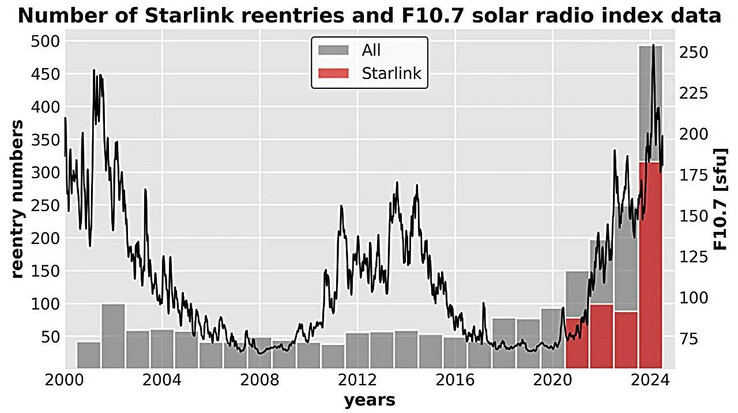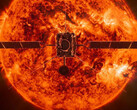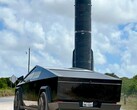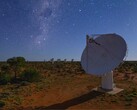When observing the sky at nightfall, it is possible to see numerous satellites each following their own trajectory. Sometimes, it is possible to see a train of Starlink satellites, resembling a long white trail moving silently through space. However, according to a study, these objects in orbit appear to be affected by the Sun's cycles, which could have serious consequences.
NASA scientists highlighted this phenomenon in the journal Frontiers in Astronomy and Space Sciences. Over the past five years, the Sun has gradually reached its peak of magnetic activity. And this is happening at the very moment when more and more Starlink satellites are falling into orbit.
It is important to understand that the Sun is a star subject to cycles that last an average of 11 years. Each time, its magnetic pole reverses. When it gains power, numerous sunspots and eruptions are visible on its surface. These phenomena release large amounts of particles and energy that can cause disruptions to satellite communications.
But that's not all, because there is another effect to consider, and it concerns the Earth's upper atmosphere. Coronal mass ejections heat up this area, increasing air resistance on these devices and forcing them to constantly redefine their trajectory to avoid falling. A study of 583 Starlink satellites during their re-entry between 2020 and 2024 shows that this intense activity accelerates the fall of these objects in orbit.
In addition, Starlink began deploying its armada of satellites in 2019. During the first year, readmissions were low, with only two cases in 2020. But subsequently, the numbers increased, with 78 re-entries in 2021, 99 in 2022, and 88 in 2023. Finally, in 2024, 316 cases were recorded, corresponding to the entire solar cycle 24.
This research should therefore help to improve the resistance of these devices and limit their re-entry into the atmosphere. This is particularly important given that they can pose a danger to humans, as in 2024, when a piece of debris from a Starlink satellite crashed onto a farm in Canada.















